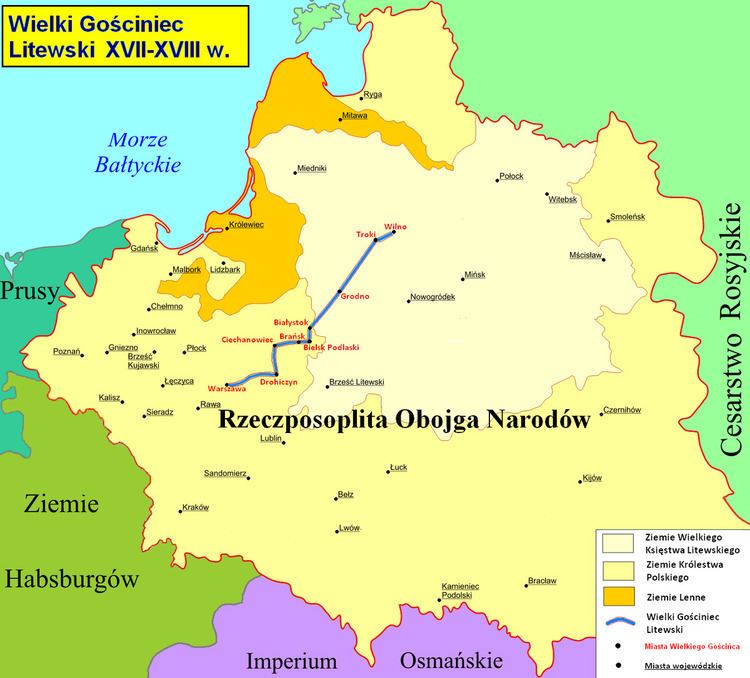 | ||
The Great Lithuanian Route (Polish: Wielki Gosciniec Litewski) was one of the most important roads of the Polish-Lithuanian Commonwealth. It connected Warsaw, the capital of the Kingdom of Poland with Vilnius, the capital of the Grand Duchy of Lithuania.
The road ran from Warsaw, through Wegrow, Sokolow Podlaski, Drohiczyn, Ciechanowiec, Bielsk Podlaski, Bialystok, Suprasl, Sokolka, Hrodna, Druskienniki and Trakai, ending at Vilnius. From the Lithuanian capital, the route continued towards Moscow, while Warsaw had road connections with most major cities of Central Europe.
The route dates back to the 13th century, but its heyday was in the 18th century, when, during the reign of King Augustus II the Strong, when regular mail service was initiated. At that time, permanent postal stations were established along the Great Lithuanian Route. These stations were financed by towns located along the route.
Several foreign travelers described the Great Lithuanian Route. Among them was Georg Forster, who crossed it in 1784 on his way to Vilnius University.
